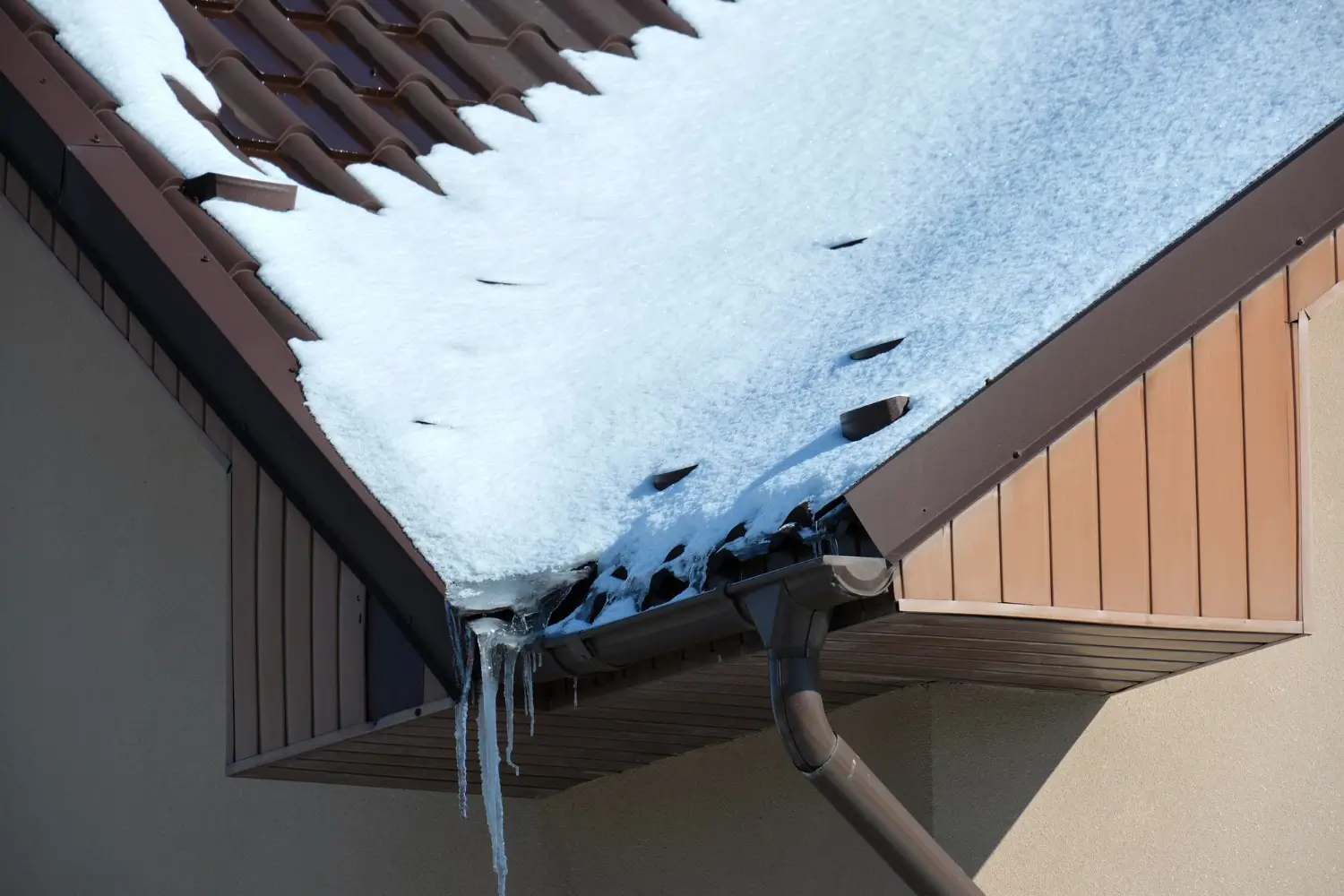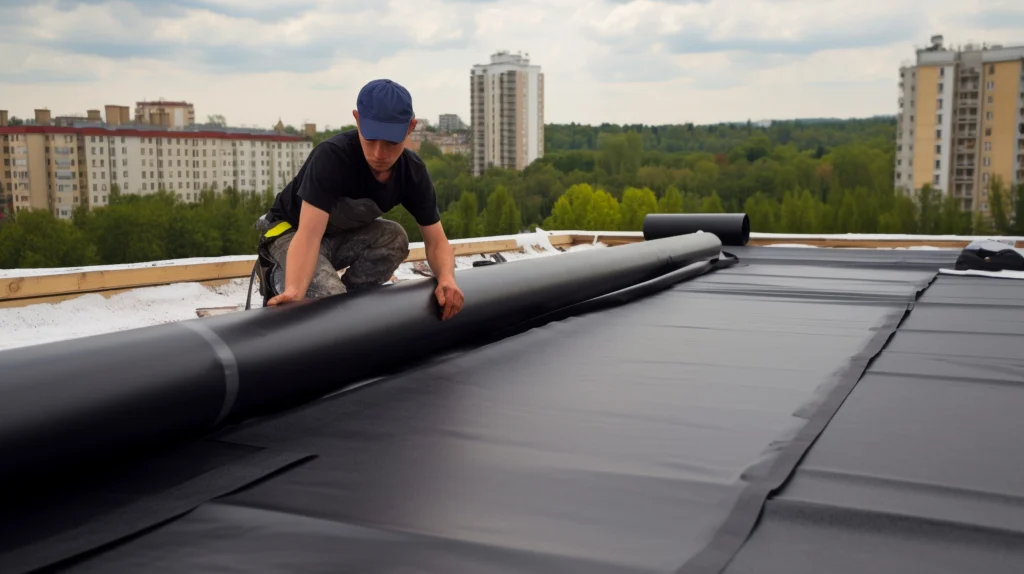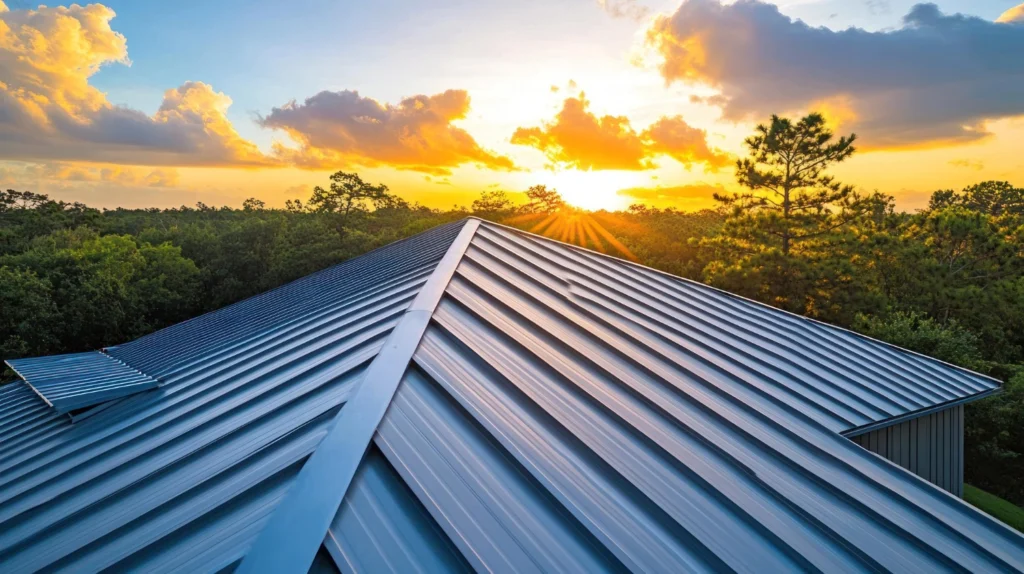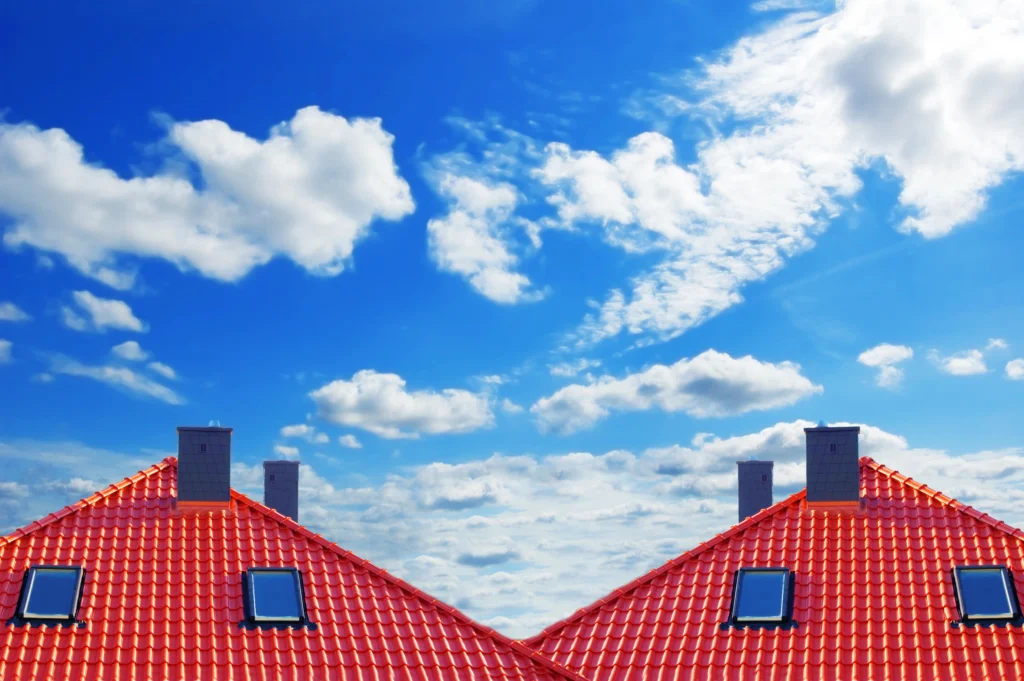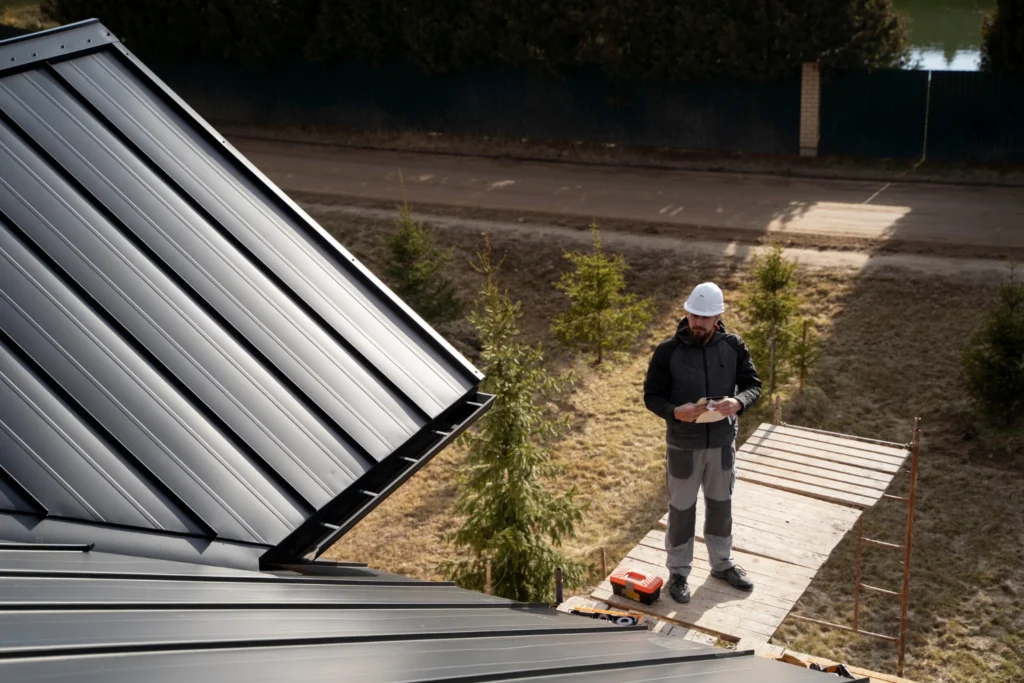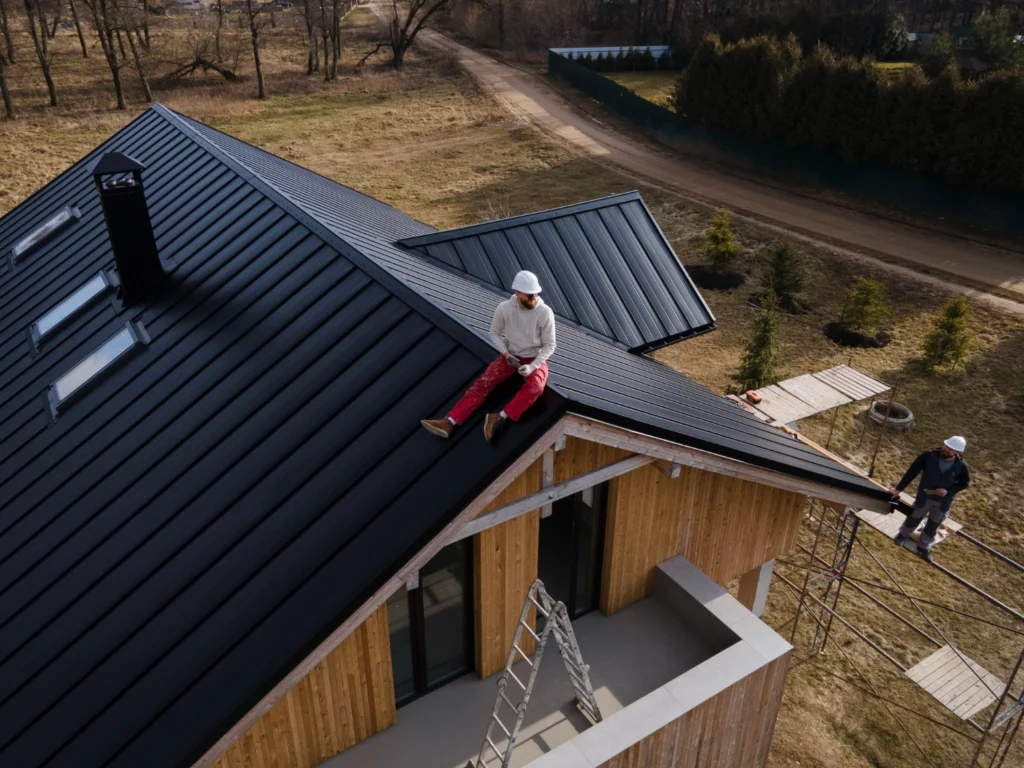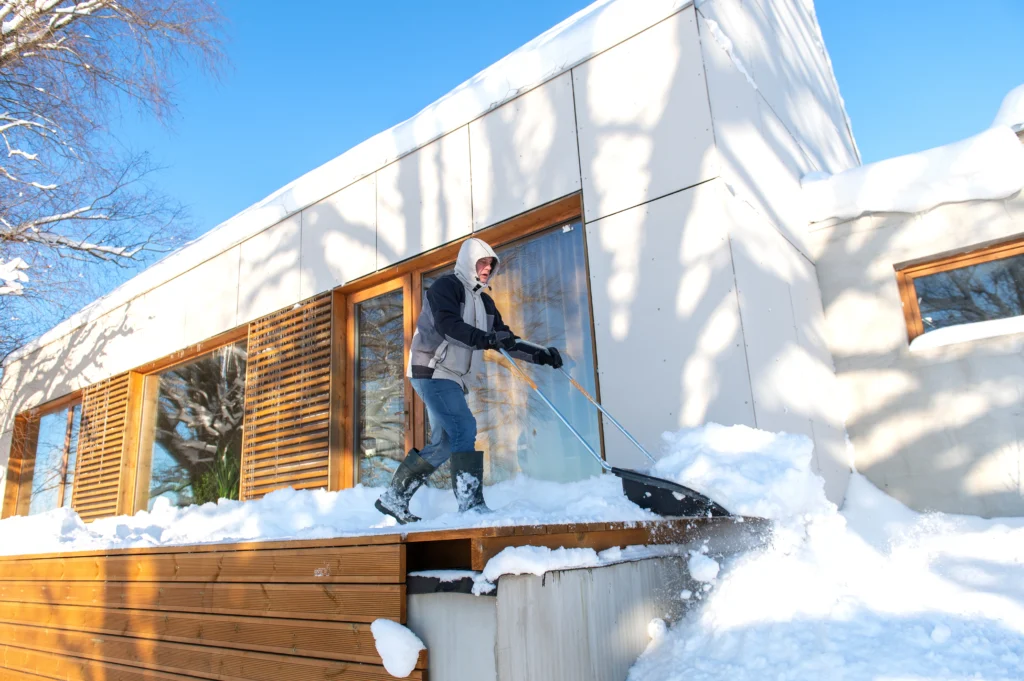Winter in Minnesota and Wisconsin brings picturesque snow-covered rooftops—but it also comes with a hidden danger and a roof problem for homeowners and property managers alike. Ice dams are a common winter challenge that can cause everything from roof damage to water leaks inside your home.
This guide will walk you through everything you need to know about ice dam removal, its costs, and tips on how to prevent ice dams from forming to protect your property.
What Causes Ice Dams on Roofs & Gutters?
Ice dams form when snow on your roof melts and refreezes at the edges, creating a dam-like barrier. This happens because of heat escaping from inside the house due to poor insulation or ventilation.
Key factors that contribute to the formation of ice dams include:
- Heat Loss Through the Roof
When an attic allows warm air to escape, it heats the roof, causing snow to melt. This melted snow flows down to colder edges, where it refreezes and forms ice.
- Poor Insulation
Insufficient attic insulation allows more warmth to escape, increasing the chances of ice dams forming.
- Ineffective Ventilation
Proper air circulation in the attic prevents uneven roof temperatures. Without it, the roof’s warm spots create the perfect conditions for ice dams.
Signs of Ice Damming
Recognizing ice dams early and stopping ice dams from forming can save you from costly roof repairs. Look for these telltale signs during winter:
- Icicles Hanging Along the Roofline
While they may look charming, icicles are often a red flag for underlying ice dams that can damage the roof.
- Ice Accumulation in Gutters
Check if your gutters are clogged with ice. This often accompanies dam formation on your winter roof.
- Water Stains on Ceilings or Walls
Leaks caused by ice dams can leave visible water stains inside your home.
- Warped Shingles or Roofing
The weight of ice dams on your roof can damage shingles, which might begin to curl or crack.
How to Safely Remove Ice Dams
While you might be tempted to remove an ice dam yourself, removing it incorrectly can cause further damage to your roof, or even an injury. Let’s explore the safest methods below.
Ways to Remove Ice Dams
- Roof Raking
Use a long-handled roof rake to clear snow from your roof. Removing the snow reduces the amount of meltwater that forms ice. Always stand on the ground while using the rake.
- De-Icing Products
Apply calcium chloride or similar de-icing materials to break down roof ice dams and melt the ice. Avoid rock salt, as it can harm your roofing and gutters.
- Professional Help
For severe cases, hire experienced professionals to use tools like steamers designed for roof ice dam removal. Companies like Miller’s Roofing are experts at ensuring no damage occurs during the process.
How Not to Remove Ice Dams
- Avoid Sharp Tools
Never use tools like axes, hammers, or shovels to break the ice. These can damage your roof and gutters.
- Don’t Use Open Flames
Using blowtorches or heat guns to get rid of ice dams is dangerous and poses a fire hazard.
- Don’t Climb Onto the Roof
Ice makes roof surfaces slippery. Attempting to remove the ice dam while standing on the roof can lead to serious injury.
Ice Dam Removal Cost
The cost of ice dam removal depends on various factors, such as roof size, ice thickness, and the method used. Here’s a general breakdown of costs you can expect in Minnesota and Wisconsin:
- Professional Steam Removal – $400–$1,200 depending on the size and severity of the dam.
- De-Icing Materials – Between $20–$50 per treatment, if done DIY.
- Roof Raking Services – $150–$300 for a professional snow removal session.
While professional removal may seem pricey, it’s a worthwhile investment to protect your roof, compared to the potential cost of water damage repairs or compromised roofing.
Preventing Ice Dams
Prevention is key to avoiding the hassle and expense of ice dam removal. Start by improving insulation, ventilation, and general roof maintenance.
How to Prevent Ice Dams in Gutters & Downspouts
- Keep Gutters Clean
Ensure gutters are free of leaves and debris before winter begins to improve water flow and prevent freezing.
- Install Gutter Heating Cables
Heat cables can keep gutters and downspouts from freezing, maintaining smooth water flow.
Long-Term Prevention Tips
- Upgrade Attic Insulation
Adequate insulation minimizes heat loss, maintaining consistent roof temperatures.
- Improve Roof Ventilation
Proper ventilation keeps the attic cool, reducing the chances of snow melting and refreezing at the roof edges.
- Regular Roof Maintenance
Have your roof inspected annually from a roofing contractor to address potential issues before snow season.
Do Gutter Guards Cause Ice Dams?
Gutter guards are designed to keep debris out of your gutters, but they can sometimes contribute to ice dam formation if improperly installed. This is because guards can trap melted snow, which might refreeze and block proper drainage.
To avoid this, choose professionally installed gutter guards and pair them with heating cables if you live in regions prone to heavy snowfalls.
Snow and Ice Dam Removal Services
Removing snow and ice dams can be overwhelming—especially for larger properties. Hiring a professional service ensures the job is done efficiently and without causing damage to your home.
Miller’s Roofing, a trusted name in Minnesota and Wisconsin, offers expert snow and ice dam removal services tailored to your property’s needs. Their licensed and bonded team uses specialized equipment, such as steam machines, to safely remove even the most stubborn dams.
Miller’s Roofing – Your Local Ice Dam Removal Experts
When it comes to protecting your home from winter damage, trust the experts at Miller’s Roofing & Siding. With over 30 years of experience, our family-owned business has helped countless homeowners in Minnesota and Wisconsin tackle ice dam issues and keep their homes secure.
Don’t wait for leaks or roof damage to escalate. Contact us today for a free estimate on ice dam removal and prevention solutions.
Call Us at 888-440-3451 or Request Your Free Estimate. Protect your home this winter with peace of mind, courtesy of Miller’s Roofing.

